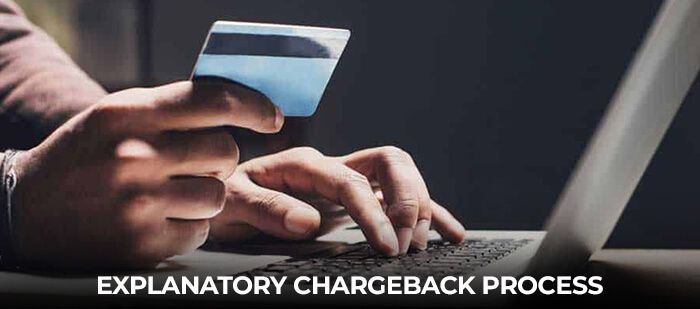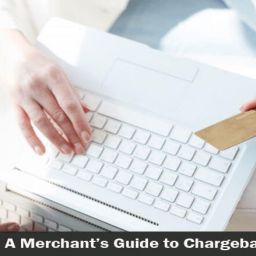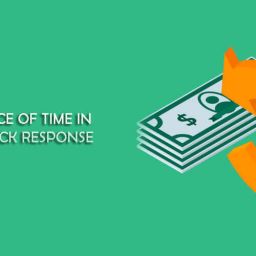
A Step-By-Step Guide To
The chargeback process can be confusing and time taking. It can be a bit costly for everyone involved. Experts say it has an amazing financial impact on merchants by a handful margin.
If the odds are already piled up against you, then is it more worth it to try and fight chargebacks? If so, the common question is what’s the best strategy to win a dispute?
In this blog, we’ll look into and examine the chargeback dispute process from starting till the end. We’ll see some of the hurdles and challenges you might encounter along the way, and how you can overcome them very proudly.
Know What is the Chargeback Process?
The chargeback process surrounds all the steps that take place between a cardholder contacting the issuing bank to dispute a charge, and the resolution of that dispute. Multiple parties, including issuers, acquirers, merchants, vendors, and card networks are be involved in this process.
The idea behind the chargeback process is very simple. If a cardholder has any problem with a transaction, and they can’t solve that problem by dealing straight away with the merchant, then the cardholder can ask directly to the bank for help.
In reality, the chargeback process is much lengthier you can say time taking which seems at first glance. Even a very easy-going case involves multiple interactions.
Know-How Chargeback Process Becomes Difficult?
A chargeback keeps input at every level of the interaction. There are super strict timelines, and the progression is anything but linear.
Requirements can differ a lot depending on which bank or card network is involved by the merchant. This complex’s the things even further. Plus, there are many key players involved, including:
The Cardholder
The owner of the card initiated the process and is involved in the transaction.
The Merchant
The party who sells the goods or services and which is being disputed.
The Issuer
The bank that issued the card to the cardholder.
The Acquirer
The bank was assigned with acquiring payment on the merchant’s behalf.
The Card Network
The card brands like (Visa, MasterCard, etc.) look through the process.
Each player introduced into the process can add additional layers of bureaucracy and paperwork.
Step By Step Guide To Chargeback Process
Every level of the chargeback dispute process offers specific challenges that can make the process more complex. Let’s jump into each step and try to clear things up.
STEP #1: Initial Dispute
The chargeback process begins when the cardholder challenges a transaction by contacting the issuing bank. Each transaction presents a disconnect potential chargeback. So, if more than one transaction is in question, many chargebacks may be filed.
Merchant Challenge
The main reason here is that you won’t know a chargeback is on its way until you get notification of it. Plus, chargebacks can also be commenced by the issuer. This is referred to as a bank chargeback. The cardholder may never even notice that a dispute occurred at all.
Expert Tip
Pay proper attention to chargeback reason codes and ask the bank to clarify any details you discover that might not match your record of the transaction. Remember: if you choose to respond, you must respond to the claim as it was made to avoid any further problems in the coming future.
STEP #2: The Provisional Refund
A conditional refund is issued to the cardholder. The issuer then recoups the money from your acquirer, who will then debit the amount of the original transaction, along with any applicable fees, from your merchant account.
Merchant Challenge
Again, you may not be aware of a pending chargeback until the funds are withdrawn. This can catch you off-guard, leading to financial stress and cash flow issues if funds suddenly and unexpectedly vanish from your account.
Expert Tip
Closely examine incoming communications. You have a limited time in which to respond to chargeback claims. Usually, it’s only a few days don’t take it taken for granted. Time is of the essence, so get started as soon as you’re alarmed by a dispute.
STEP #3: The Reason Code
At this stage of the chargeback process, the issuing bank lots a numeric reason code for the chargeback, then electronically transfers all the chargeback information to your acquirer. The acquirer will go through the information, then forward it along to you.
Merchant Challenge
Chargeback reason codes are made to help you understand the reason for the chargeback and decide the best way to validate the original transaction. However, banks allot reason codes based on cardholders’ claims. It’s easy for the bank to be misled into permitting a friendly fraud chargeback. Without understanding the true chargeback reason, you can’t deploy the proper dispute or prevention strategy
Expert Tip
Pay deep attention to chargeback reason codes and ask the bank to clear any details you discover that might not match your record of the transaction. Remember: if you think to respond, you must respond to the claim as it was originally.
STEP #4: The Choice to Re-Present
You have the option to welcome the chargeback, or fight it if you give a thought to claim is invalid. Give a glance at the Chargeback Debit Advice Letter provided by your acquirer, and decide if it’s worthwhile to get involved in representment.
Merchant Challenge
Disputing a chargeback requires proper documentation in compliance with representment requirements. This may include a photo state of the return policy, signed documents or the receipt from delivery, or one of the dozens of other pieces of documentation. Unless you’ve arranged every document in clear order for each transaction, collecting proofs could be a struggle.
![]()
Email us anytime!
Email customer service 24/7
![]()
Call us anytime!
Reach customer care 24/7 at +1 (888) 901-8653
Expert Tip
Once you decide to fight the chargeback, make sure that the proof you supply corresponds with the supplied reason code. Be thorough, and give enough evidence to make your case clear and sorted.
STEP #5: Compile Your Documents
You have to be proactive and put together all the documentation which is must to respond to the cardholder’s claim. This may involve the Chargeback Debit Advice Letter mentioned above, as well as a disproving letter and a reversal request. You must also include compelling proof to support your claim.
Merchant Challenge
In most cases, you’ll only have a few days between learning more about chargeback and your time limit to submit a representment. You have to do this as soon as possible. Many merchants lack the high frequencies and the expertise to build compelling cases in the window of time allowed.
Expert Tip
Given the time limits, you must keep all important documentation organized. Transaction records, customer information…all this data needs to be kept in a way that lets you recall it quickly, and at will.
STEP #6: Submit the Representment Package
You will give your response, along with supporting proofs, to your acquiring bank. The acquirer looks at the case for completion, then transmits it to the issuer. This is what’s called “represented,” because you’re re-presenting the transaction to the issuer.
Merchant Challenge
In addition to the quick rotation the time, the requirements for how to give your case can be a bit tough. The accurate process and nomenclature are different for each card network. Banks have various requirements for how to submit documents as well.
Expert Tip
Do your work about each card network’s necessities. Use chargeback response bullet points to stay on track (when it makes sense to do so).
STEP #7: Bank Review & Decisioning
The issuing bank looks at the information. One of three things will happen:
- The issuer rules on your part: Your representment case verify the original transaction. The transaction amount is re-charged to the cardholder’s account, and the funds go back into your bank account.
- The issuer rules in favor of the cardholder: Your proof didn’t convince the bank to get the chargeback. The issuer’s decision stands.
- You win, but the issuer files another chargeback: The issuer has the right to file another chargeback for the same transaction for the 2nd time. Reasons for a second filing might include the invention of new information or a change of the reason code.
Merchant Challenge
If there is one thing worse than a chargeback, it’s a second chargeback. No matter the card scheme, subsequent responses shoot your costs up and eat into your resources, dropping down your ROI.
Expert Tip
Maintain an open conversation with the bank throughout the chargeback process. Always be willing to settle with the cardholder wherever necessary. A chargeback arbitration process is the last place for a reason.
STEP #8: Arbitration
This is where the stakes get very high. With arbitration, you’re asking the card network to issue an impartial decision. The card brand’s decision will be last and final, and the party who is responsible for the dispute could be hit with hefty, penal fees.
Merchant Challenge
Only 2% of disputes make it to arbitration. Even if you think you have a close case, there’s still no guarantee that you will win. And, if the card network rules on the cardholder’s side, they might ask for a fee totaling hundreds, or even more than that.
Expert Tip
The only go-ahead to this stage is if the dollar value of the goods or services accounts for the risk. Then, ask for advice from your acquirer as to the amazing way to proceed.
Get Help With the Chargeback Process
The credit card chargeback process follows a twisting path. It hardly ever, if ever, goes the same way twice.
Plus, chargeback regulations are frequently changing. It’s easy to see how just staying current on the networks’ expectations is a full-time job.
By the grace of God, it’s not a job that you have to do alone.
Hiring a chargeback expert can make a big difference in your win rates and keep chargeback ratios controlled. Relying on your monthly chargeback issuances, a service provider who can provide end-to-end management of the chargeback process on your behalf might be exactly what you need. Chargeback Expertz is the master in hitting back the chargebacks. We are available to you 24*7.




